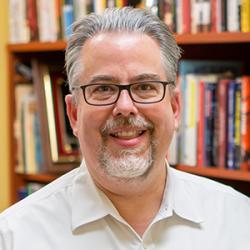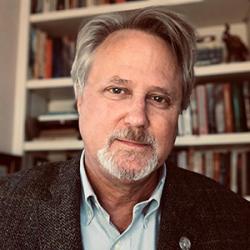Editor’s note: The opinions expressed by the authors do not necessarily reflect the opinions of the AAMC or its members. This is the first of two pieces by the authors. The second recommends ways doctors and hospitals can help prevent gun deaths.
The scale of gun violence in the United States lends itself to astonishing comparisons.
Our nation’s firearm-related civilian death toll over the past 50 years exceeds the number of soldiers who perished in combat in all our wars combined. More American children and young adults died from firearm injuries in 2020 than from any other cause. In recent years, our rate of gun homicides has been 25 times higher than that of comparable nations. And if we were to inscribe on a granite wall the names of all those lost to firearm violence in the past two decades, we would need a monument 12 times larger than the Vietnam War Memorial.
The absolute numbers are equally sobering.
Since the beginning of the 21st century, an estimated 2.5 million people have been injured in gunfire in the United States, and 750,000 of them have died. Although we grow increasingly accustomed to random shooting rampages — a uniquely American recurring nightmare — on the day of any such shooting in 2020, an average of 134 other people died from firearm injuries. More than half those deaths were suicides; others were gang shootings, domestic violence incidents, or arguments gone bad between intoxicated young men. The U.S. gun homicide rate increased by 33% in 2020.
Each of these data points represents a life cut short, a heartbreaking story that adds to the unabated drip, drip, drip of gun violence in America.
Fourteen-year-old Eric died while walking home from school in a crime-burdened neighborhood in San Diego, shot by one of five other teenagers, allegedly gang members. Across town in a middle-class suburb, a highly intoxicated man named Daniel fatally shot the boyfriend of his estranged wife, and then shot himself. In a hospital in Tulsa, a surgeon named Preston died when a former patient shot him and three other people with an AR-15 rifle. A young Iraq war veteran named Tony, diagnosed with posttraumatic stress disorder and struggling through a divorce, called his mother on Christmas to say, “Don’t ever forget how much I love you” before shooting himself.
“Why would anyone kill all those innocent people?” That’s the natural question when we learn of yet another senseless gun massacre against strangers in a public place.
In a diverse nation with more guns than people and a constitutionally protected right to bear arms, the complex mix of circumstances and cultural forces that fuel gun violence pose daunting challenges for those who hope to understand and address it.
What’s going on?
“Why would anyone kill all those innocent people?” That’s the natural question when we learn of yet another senseless gun massacre against strangers in a public place.
The answer we often hear is “mental illness,” an explanation that fits the common perception that people with serious mental illnesses are dangerous. But most violence, including lethal and near-lethal violence, is not causally linked to mental illness.
Mental illness is quite common in the United States. In 2020, approximately 20% of U.S. adults — 53 million people — met criteria for at least one psychiatric diagnosis in the previous year, and nearly 6% — 14 million individuals — had a serious, impairing mental illness such as schizophrenia, bipolar disorder, or major depression. Given that so many individuals have a mental health diagnosis and the large majority of those individuals are never violent, psychiatric illness is too blunt an instrument to serve as a useful indicator of violence risk.
Indeed, if serious mental illnesses suddenly disappeared, violence would decrease by only about 4%. More than 90% of violent incidents, including homicides, would still occur.
Even mass shooters, who might seem most likely to be driven by mental illness, don’t necessarily suffer from major psychiatric disorders. Arguably one of the best such reports on the topic, conducted by the Federal Bureau of Investigation, found that only 25% of such assailants had a diagnosed mental illness. Although it is difficult to obtain precise data on the gun-prohibited status of every mass shooter, less than 5% of these individuals had a record of a gun-disqualifying mental health adjudication, such as an involuntary commitment to a mental health facility.
Meanwhile, “Why did he kill all those people?” is so compelling a question that it seems to demand an answer. If mental illness isn’t usually the cause, what is? The honest response from science is that we don’t know all that much. Sometimes, a stew of alienation and resentful anger directed against a dehumanized “other” is at play. In rare instances, acute psychotic symptoms such as paranoid delusions contribute. In addition, crisis, trauma, and significant personal loss are common to some assailants, but those factors ultimately reveal little since they are shared by many people who never engage in a mass shooting.
The real story — and the real need — regarding mental illness and violence is suicide. Not only are most firearm deaths suicides, but most suicides are causally linked to mental illness.
Given these realities, erroneously placing mental illness at the center of the American gun violence narrative stymies solutions to both these public health problems, which come together only on their edges.
Associating mental illness with violence reinforces stigma and unwarranted fear of people with mental illnesses — people who need support to recover from serious brain-based conditions. In addition, some mental health advocates may understandably be tempted to focus on violence in the quest for crucial funding of services, but making such a case can lead to misaligned priorities, misdirected resources, and misapplied coercive interventions against people with mental illnesses.
The real story — and the real need — regarding mental illness and violence is suicide. Not only are most firearm deaths suicides, but most suicides are causally linked to mental illness.
Even when we look at suicide, though, the relationship between mental illness and risk is complex and nuanced. For example, there are important gender differences in the role of both mental illness and firearms in suicide. Extensive research on suicide risk factors suggests that mental illness is implicated in about 7 out of 10 suicides among women, but only about half of men who die by suicide. Social and economic stressors are stronger determinants of suicidality among men, who are also significantly more likely than women to use a firearm in a suicide.
Despite such complexities, what is clear is that people who may be suicidal should not have access to firearms when they are most at risk. Suicidality is often a passing urge — many people who consumed large amounts of pills and survived later say they regret their suicidal action — and firearms offer little chance of survival.
What can we do?
To help address the risk of gun-related suicides, providers need the training, skills, and resources to systematically screen patients for depression and discuss firearm safety when clinically indicated. At the institutional level, hospitals and health care systems also should incorporate policies and guidelines to facilitate comprehensive screening for depression and educate patients about firearm safety. For example, electronic health records could prompt clinicians to screen patients and conduct firearm conversations.
Medical schools should universally teach future clinicians the skills necessary for discussing firearm safety. Indeed, subject matter experts have developed consensus guidelines for educating all medical professionals about firearm injury and prevention, and several institutions have robust firearm-related efforts. Part of such education must involve discussing firearms with patients in ways that are respectful of their values and sensitive to their cultural experiences. Ample guidance in this area is available, such as the use of terminology that is most likely to resonate with different types of patients.
Clinicians should also learn about ways to temporarily limit access to firearms when patients present a risk of harm to themselves or others. Depending on the state, options for limiting access include Extreme Risk Protection Orders (ERPOs) — also known as red flag laws — in which family members and law enforcement personnel may request that a judge require a person to temporarily relinquish their firearms. In addition, several states allow individuals who are concerned that they may harm themselves in the future to enroll voluntarily in a background check database that would prevent them from purchasing a firearm without a waiting period.
In 19 states and the District of Columbia, clinicians can also contact law enforcement to request that a judge issue a restraining order to separate firearms temporarily from people at high risk of harming themselves or others. In four states, clinicians are authorized to petition a court directly for an ERPO consistent with HIPAA privacy rules and with some legal immunity. These orders are time-limited, carry no criminal penalties, and do not create a criminal record. They also offer due process protections, respect the Second Amendment, and are supported by the majority of Americans, including a majority of gun owners.
We will never solve the problem of gun violence in America by “fixing mental health.” That is a simplistic notion, one that focuses on a serious but different public health problem.
In reality, the causes of gun violence in the United States are numerous and complex — and so are the solutions. But if we pursue proven measures designed to prevent access to firearms among people most at risk for perpetrating violence at their riskiest times, we will be moving significantly in the right direction. If health care providers use their influence to advocate for evidence-based gun safety policies and practices; if we implement firearm safety conversations systematically in clinical care; and if we teach these skills to future providers, we will save many more lives than if we only work to heroically treat yet another catastrophic shooting victim.


